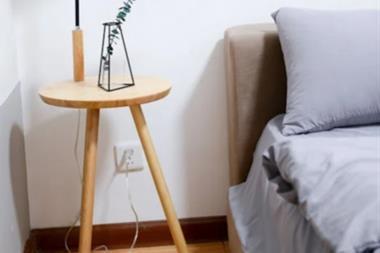A lack of choice will force real estate investors in the increasingly competitive Spanish market to consider substandard assets, according to the country’s biggest listed property company.
Pere Viñolas-Serra, CEO of Inmobiliaria Colonial, told IP Real Estate that the biggest risk facing overkeen investors was in treating secondary assets as prime.
“There’s a scarcity of product alongside considerable capital,” Viñolas-Serra said. “We want to avoid the temptation to buy what is not secure.
“It’s easy to make a mistake and investors risk buying an asset they would not otherwise consider.”
Colonial will continue to focus on the central markets of Barcelona and Madrid, Viñolas-Serra said. It will also continue to be active in the Paris office market through French REIT Société Foncière Lyonnaise, of which it owns a majority share.
“There are, however, micro-bubbles where as many as 30 parties can sometimes be bidding on a single asset”
Pere Viñolas-Serra
Madrid, he said, was further down the road to recovery than Barcelona.
“When you move to beyond the prime area, then you are more exposed to the wider macroeconomic issues Spain still faces,” he said, referring to Spain’s high levels of unemployment.
In its Metro Area Outlook, Moody’s Analytics said that, while 18% of the population is still out of work, the Madrid area’s labour market has outperformed, with workers “less concerned” about job security than their counterparts elsewhere in Spain.
Headquarter offices are consequently a safer investment option than back offices in secondary locations, Viñolas-Serra said.
Colonial, which has a €5.5bn portfolio, was recently reported as being in the final round of bidding on the Madrid headquarters of Spanish finance group, Ahorro Corporacion. The prime office, known as Castellana 89, has been on the market for over a year, according to reports. Serra would not comment on Colonial’s rumoured interest in the building.
Despite the frenzied nature of bidding for Spanish real estate, the sector is not in a “bubble”, Viñolas-Serra said.
“There are, however, micro-bubbles where as many as 30 parties can sometimes be bidding on a single asset,” he said, adding that further yield compression was likely for prime properties.
Investor interest also in Spanish REITs, known as SOCIMIs, which promise high yields and a relatively conservative investment approach.
Spain’s government first cleared the path for SOCIMIs at the start of 2013.
Corporate income tax for SOCIMIs is 0%, with their minimum share capital requirement being €5m. The vehicles have attracted the likes of Paulson and Co, Quantum Strategic Partners, the Canepa Group and Moore Capital Management, as well as Fidelity and Morgan Stanley.
The firms collectively backed Hispania Activos Inmobiliarios, which trades in the IBEX Small Cap, when it raised €760m in March last year. APG and also both invested in the new REIT, which had aimed to raise €500m and is targeting Spain’s multi-family residential, office and hotel sectors, buying in Barcelona and Marbella.
PIMCO committed €50m to the Lar España SOCIMI, which listed last year with a total offer size of €408m. PIMCO’s 12.5% stake made it an anchor investor in the SOCIMI, managed by Grupo Lar.
Merlin Properties became a SOCIMI in June last year with a €1.5bn IPO.
Serra said a conversion to a REIT was unlikely but not impossible for Barcelona-based Colonial, which is backed by Qatar Investment Authority, Joseph Charles Lewis, Fidelity and Spain’s Grupo Villar Mir.
Serra said he envisages more investment in Spain’s current SOCIMIs rather than more new vehicles listing, many of which trade on Spain’s alternative investment market (Mercado Alternativo Bursátil).
“There’s a lack of credible platforms, so they should become bigger,” Viñolas-Serra said.







